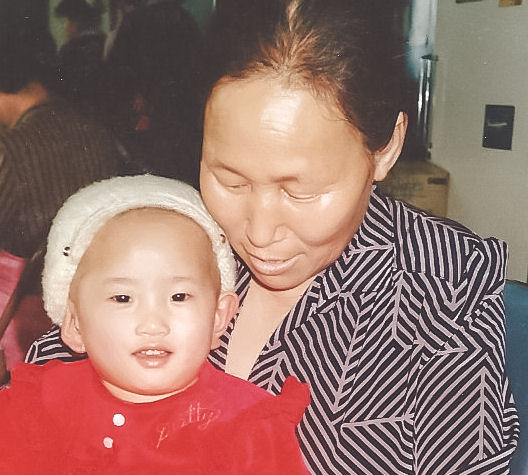Note: I want to acknowledge the fact that transracial adoption encompasses a diverse spectrum of family compositions. However, a vast majority of the transracially adoptive families with whom I have worked include white parents who have adopted children of color. This disproportionality is reflected across the board in all types of adoption, so this post was written with this specific family composition in mind.
*****
I truly appreciate those who do not experience the world as people of color who are fighting the fight for and alongside people who do. Because the onus of educating others about how it feels to be a person of color in this world should not fall on the shoulders of those who experience it. Because—regardless of the messages people of color attempt to convey—the messages are often somehow viewed as more valid and more accepted when they are shared by those who are not people of color.
Because people of color need to know their place.
Because people of color need to assimilate.
Because people of color must remain silent.
Because people of color are more accepted when they don’t fight back.
It is your responsibility, especially as transracially adoptive parents, to educate yourselves and those around you.
To read.
To listen.
To open your hearts and your minds to the messages being shared.
To wholeheartedly immerse yourselves and your family in the communities with which your child identifies.
I have written about and shared my thoughts on many issues relating to adoption throughout the years, but the one issue that exhausts me the most to write about is race. Because there are people who refuse to believe that racism exists. There are people who refuse to accept the fact that the world will view their children of color differently. There are people who refuse to accept the fact that their children of color will experience the world differently.
Because they don’t see color.
Because they know and are friends with people of color.
Because there is a family of color in their neighborhood.
Because their family and their community are inclusive of people of color.
Because they love all humans, regardless of the color of their skin.
You cannot truly love or accept people of color if you refuse to listen to them.
If you refuse to accept their reality—their truth.
If you refuse to hear their messages because they hurt too much—because they may reflect realities about yourself that are difficult to acknowledge and accept.
If you are not willing to listen and learn from people of color—regardless of how difficult the messages are to hear—you cannot truly love or accept them.
No, I absolutely do not attribute all of the evils and injustices of the world to race.
Yes, I absolutely believe that we should hold ourselves accountable for our words and our actions.
No, I do not believe that everything is about race.
Yes, I do believe that a lot of the hate and political unrest that currently exists in our country is race-related.
Because some things ARE about race.
As a child, every time I saw someone pull their eyes back when looking at me, I learned that the world saw me as different.
Every time I heard the taunts about “dirty knees”, I learned that the world saw me as inferior.
Every time I heard someone tell me to “go back to where [I] came from”, I was reminded that I didn’t belong.
The first time I heard someone call me a “chink bitch”, I learned that the world was not a safe place for people like me.
And, the first time I heard my brown son say, “Mom? People are going to treat me differently because I am darker than my brother, aren’t they?” I knew that the world was not a safe place for people like my sons either.
The world teaches people of color how to externalize racism when we experience microaggressions and macroaggressions;
when our experiences and truths are invalidated, minimized, or completely denied;
when we are told that we have created our own oppression;
when we are told that we make everything about race;
when our messages are met with defensiveness and hatred and vitriol;
when we are forced to assimilate;
when we are forced to remain silent.
When you look at your child, you may see them as beautiful;
you see them as a gift;
you see their talents and abilities;
you see possibility;
you see their future;
you see them for who they truly are.
When others see your child, they will immediately make judgments about your child based on their outer appearance. What others see in your child will determine the way they interact with your child—if they choose to do so at all.
And, the reality is that the world may view your child as “cute” or “adorable” or “safe” now, but god-willing—your child will become an adult some day—and the world will undoubtedly view your child differently as they age.
The world may grow to fear your child as your child grows—for no other reason than the color of their skin.
It is your job as their parent to help prepare your child for the realities of the world. Because that is an aspect of what you signed up for when you chose to adopt transracially or transculturally.
If you are unable to hear the messages of people of color who are not known to you, and your first instinct is to put your defenses up and attack—how do you expect to create a safe and open environment in which your child can talk to you about race and their experiences with racism?
While it may be easy for you to hide behind your computer or phone and spew hatred or vehemently deny the experiences of people of color—it is exhausting and heartbreaking and infuriating to be a person of color who is pouring our hearts out to you and sharing our thoughts and experiences with you (or elevating the voices and experiences of other people of color), only to be attacked and to have our realities invalidated in such hateful and hurtful ways.
When I write posts like these or anything race-related, I literally have to brace myself before posting.
Because the responses are often the same.
Because there will always be people who don’t want to hear the messages I am attempting to convey.
Because there will always be people who are so offended and so angered by our truths, that they choose to attack blindly.
Because I am not their daughter.
I am telling you now that I am someone’s daughter.
And, what I have to say matters.
Please listen.
Please learn.
Because what I am telling you will undoubtedly become your child’s truth or experience at some point in their lives—and it is your job to prepare them for the realities of the world.


Love this
This is beautiful and honost. My son in Korean (8) and my daughter is Chinese (4), I am Caucasian. I learned sooo much at our first Heritage Camp this year that has opened my eyes. The most poignant messages received from adult adoptees sharing their experiences. My heart is heavy with the knowledge that my children, my precious children, will suffer racism. My job is to prepare them….. But how? I have begun conversations with my son, he is quiet while listening and soon changes the subject. I don’t push, but want to normalize conversations about race to help him be able to talk about it and know that it’s safe to talk about. Any suggestions on how to approach this with an 8 year old?
I agree with the comments above….the post is beautiful and honest. My son is 5.5 years old. He is biracial…birth mother is white and birth father is Tanzanian.
I also have begun different conversations with him and have read some books together.
But I would also SO LOVE any tangible advice on the “how” to have more conversations. Is this something you could share with us? Ideas and conversation starters and topics to incorporate. Or do you know of some great resources?
Thank you for your beautiful blog. I am listening.